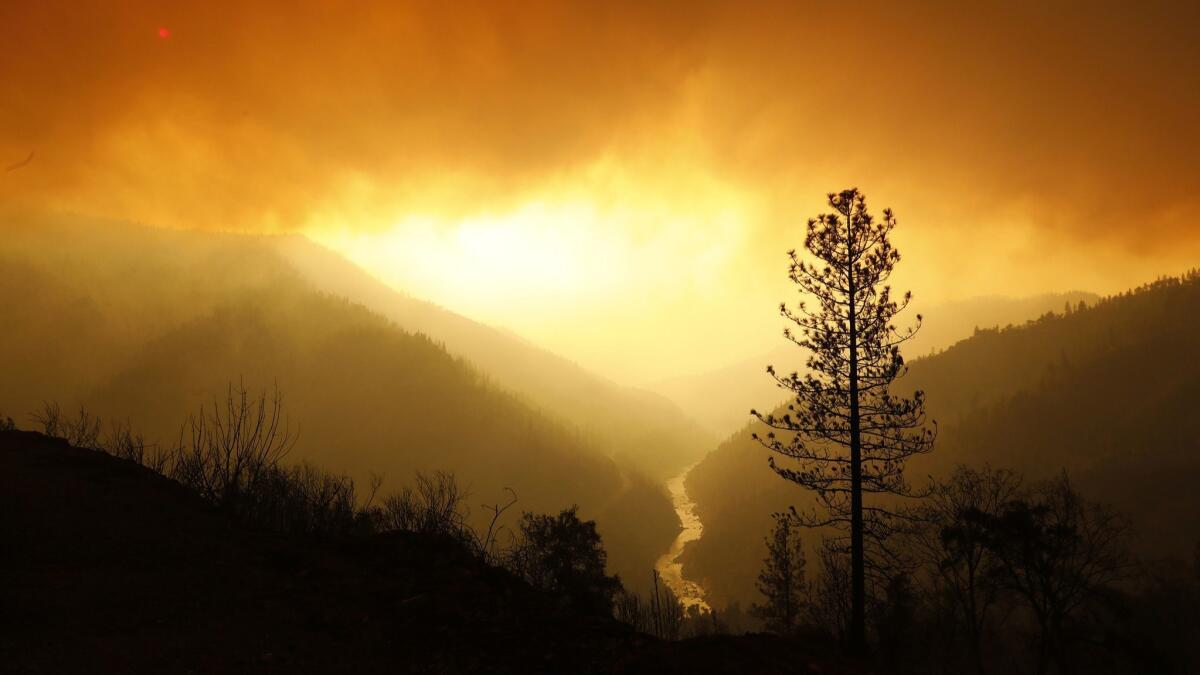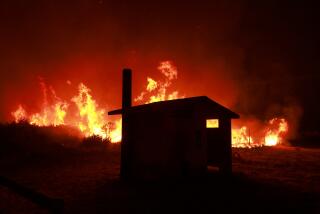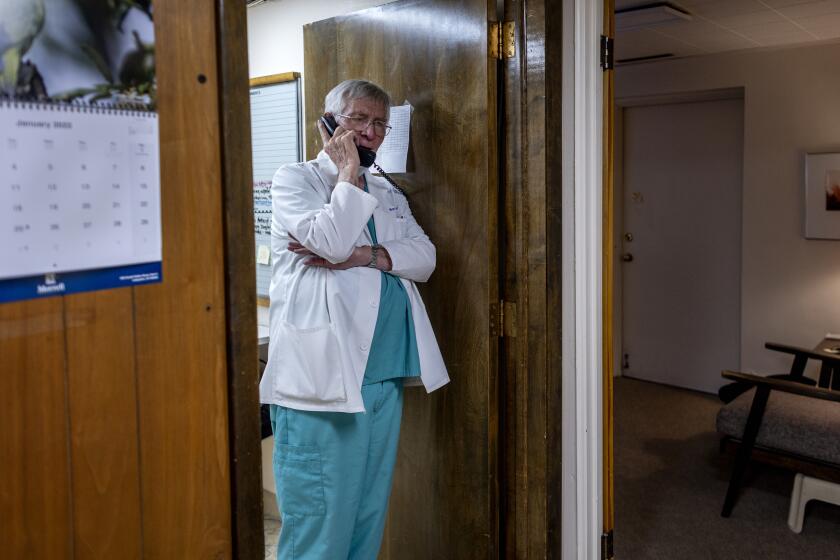Op-Ed: Michael Bloomberg: PG&E bankruptcy is a wake-up call on financial risks of climate change

During the bitter cold snap that hit much of the United States last week, President Trump tweeted a plea to global warming: “Please come back fast, we need you!” The next morning, the largest electricity provider in America’s most populous state filed for bankruptcy because of global warming.
If the president’s cluelessness doesn’t ring alarm bells in statehouses and boardrooms around the country, the bankruptcy of Pacific Gas & Electric should. According to the company, it could no longer afford the increasing liability costs of wildfires fueled by the hotter, drier weather that climate change is bringing to California.
Fifteen of the 20 largest wildfires in the state’s history have happened since 2000, damaging homes and businesses and claiming lives. PG&E is the largest company to go belly up because of the damage from fires.
We are flying blind when it comes to the serious economic costs we face from climate change.
But PG&E is far from alone. Climate change threatens to impose heavy costs on companies around the country. The trouble is: We don’t know the extent of those potential costs — and neither do the companies.
There’s a saying I’ve always believed in: If you can’t measure it, you can’t manage it. If companies don’t measure the financial risks they face from climate change, they can’t reduce their exposure to those risks, at least not effectively.
If investors don’t know the potential liabilities a company is facing, they may overvalue it and lose their shirts. And by overvaluing companies that face serious climate risks, they undervalue companies and industries, such as renewable energy, that are designed to minimize warming.
We are flying blind when it comes to the serious economic costs we face from climate change. This lack of transparency is a market failure that’s holding back actions that would reduce emissions, mitigate risks and lead to more investment in clean energy.
We can fix this. Improving climate risk disclosure is not a sexy, splashy subject. It doesn’t get a lot of headlines or celebrity endorsements. But it can do a lot to speed up our progress, and it’s something that people across the political spectrum, and across the public and private sectors, can agree on. It should be a part of any Green New Deal, but we don’t have to wait to get started.
Publicly traded companies like PG&E are already required by law to disclose in annual filings a wide range of information about their financial health, including material risks they face. They must disclose such risks because if they suffer financial losses, the harm can spread far beyond the company to shareholders, pensioners, retirees and private investors.
Climate change is the mother of all material risks.
Take PG&E. Although they may not know it yet, many Californians are going to feel the effects of the company’s bankruptcy. For instance, the state’s pension system, CalPERS, owns tens of millions of dollars in PG&E stock. Still worse, PG&E provides a crucial public service for which Californians might now have to pay more.
Over the last few years, I have chaired an international effort called the Task Force on Climate Related Financial Disclosures. We created a set of recommendations to help companies measure and disclose information about how climate change could affect their facilities, their supply chains, their labor force, their delivery of products and services and other essential operations.
For example, companies with plants near coasts face a host of risks from rising sea levels and stronger storms. Companies that use a lot of water — beverage companies, farms, even microchip makers — must take into account increasing droughts. Our recommendations have been endorsed by more than 500 companies and financial institutions in 45 countries.
Enter the Fray: First takes on the news of the minute »
Businesses have strong incentives to be a part of the solution to climate change. Many companies (including mine) have reduced their energy bills by upgrading the efficiency of their buildings and moving to renewable energy. Actions like these are one reason the U.S. has been able to reduce its emissions more than any other large nation over the last decade, with almost no help from Congress.
The PG&E bankruptcy is a serious challenge for California, but it should lead more public companies to begin identifying and disclosing the potential liabilities they face from climate change. No company wants to become the next PG&E. And no one with a pension, 401(k), mutual fund or stock portfolio wants to lose money.
Better data and more transparent markets can prevent a lot of unnecessary damage to our economic and financial health. And they can help the U.S. step up the fight against climate change, without waiting for the president to get a clue.
Michael Bloomberg is the founder of Bloomberg LP, the U.N. Secretary-General’s Special Envoy for Climate Action and a former three-term mayor of New York City.
Follow the Opinion section on Twitter @latimesopinion or Facebook
More to Read
A cure for the common opinion
Get thought-provoking perspectives with our weekly newsletter.
You may occasionally receive promotional content from the Los Angeles Times.










